For those keen on creation, there’s no school of magic more enticing than Conjuration. Conjurers summon up matter from nothingness, call upon extraplanar forces for aid, and teleport between distances and dimensions with ease.
Before you begin to explore the mysteries of Conjuration, it helps to have a handle on what the school is all about. So start chanting your incantations and drawing your pentagrams, because we’re taking a look at 22 statistics on DnD 5e’s School of Conjuration:
-
Both the longest and shortest spells from the School of Conjuration involve teleportation – Teleport (577 words) and Misty Step (19 words). The second shortest Conjuration spell, Far Step, also involves teleportation.
-
There are 90 Conjuration spells, which ranks as the third-highest after Evocation and Transmutation.
-
Conjuration spells have the second-highest average (164) and median (149) word counts of any school of magic in 5e. Evidently, conjuring things into existence is complicated work.
-
Conjuration has the longest 1st-level spell in the DnD 5e by a wide margin — Find Familiar, at 346 words, is 42% longer than the next longest 1st-level spell (Ceremony).
-
Like most schools of magic, Wizards reign supreme with 55 Conjuration spells, the most of any class. That means they have access to just over 60% of what Conjuration has to offer. Paladins, with only 5 Conjuration spells, are the least fussed with all this conjuring business.
-
While most people think of Warlocks as the natural class for Conjuration, Rangers actually have a more Conjuration-heavy spell list. 24% of Ranger spells are from the school of Conjuration, while only 22% of Warlock spells are.
Bards, with sub-8% Conjuration spells, have the least Conjuration-focused spell list. Don’t let that stop you, though, College of Creation Bards!
-
64% of Conjuration spells are Utility. Conjuration is also about dealing damage and debuffing enemies. But by and large, the School of Conjuration is focused on creating unique advantages in and out of combat.
-
97% of Conjuration spells have a verbal component. 47 Conjuration spells require a material component; of those, only 5 Conjuration spells consume the material component.
-
The most expensive Conjuration spell that conusmes the material component is Heroes’ Feast, which requires a gem-encrusted bowl worth at least 1,000 gp. It’s also the only spell in the school of Conjuration that provides a buff.
-
The most expensive Conjuration spell overall is Leomund’s Secret Chest, which requires a fancy chest worth at least 5,000 gp, plus a tiny replica made of the same materials worth at least 50 gp. The components aren’t consumed in the casting of the spell, though. Just don’t lose the replica chest!
-
There are 47 concentration spells and 4 ritual spells in the School of Conjuration. You’d think a school that sounds like it’s all about demonology and summons to have more than 4% ritual spells, but there you are.
-
The Player’s Handbook kicked DnD 5e off with 62 Conjuration spells. Xanathar’s Guide to Everything added 17 more, and 11 of the 21 spells introduced in Tasha’s Cauldron of Everything were Conjuration spells.
-
Conjuration spells tend to be mid-ranged. 57% have a range of 30, 60, or 90 feet.
-
There are 24 area of effect spells in the School of Conjuration. Most of them are damage-dealing, but there are some AoE utility spells (like Web) and healing spells (like Mass Cure Wounds, Mass Heal, and Heroes’ Feast) as well.
-
Only 22 Conjuration spells can be upcast. That works out to much lower than the 5e average of 35% of spells with an upcast option.
-
About 1/3 of Conjuration’s spells are damage-dealing — 31 in total. Here’s a breakdown of damage types:
42% (13) of Conjuration’s damage-dealing spells do some sort of physical damage, more than you might expect.
-
Spells in the School of Conjuration mostly require Dexterity, Constitution, and Strength saving throws.
-
The School of Conjuration’s most damaging ability is Blade Of Disaster, a ninth-level spell introduced in Tasha’s Cauldron of Everything. It deals an average of 67.6 force damage in total. Math inc:
Blade of Disaster deals 4d12 damage (26) on a 1-17 hit. It crits on an 18+ for 12d12 (78) damage. It also strikes twice.(1-17): 4d12 (26) x 0.85 = 22.1
(18-20): 12d12 (78) x 0.15 = 11.722.1 + 11.7 = 33.8
33.8 x 2 = 67.6
Of course, this all assumes the attacks hit at all. But with no way of knowing the foe in question’s AC, this is just the average damage on-hit.
-
Like most spell schools, about 3/4 of Conjuration’s spells have a casting time of 1 action. 1 minute is the nearest runner-up.
-
29 Conjuration spells are instantaneous, and 22 spells are 1 minute and 1 hour respectively. Together, these three durations account for 81% of Conjuration spells.
Conjuration also has the only spells in the game with a duration of 6 rounds (Tsunami) and 6 hours (Dream of the Blue Veil).
-
Interestingly, the majority of Conjuration spells are concentrated in the middle levels (3rd, 4th, and 5th).
-
25 Conjuration spells from DnD 5e have been around since the first edition of Dungeons and Dragons. Note that this only includes exact name matches:
Call Lightning Leomund’s Secret Chest Cloudkill Maze Conjure Animals Mordenkainen’s Faithful Hound Conjure Elemental Plane Shift Create Food And Water Produce Flame Dimension Door Stinking Cloud Drawmij’s Instant Summons Teleport Entangle Transport Via Plants Find Familiar Wall Of Thorns Fog Cloud Web Gate Wish Incendiary Cloud Word Of Recall Insect Plague
Methodology
All data is taken from the three main fifth edition rulebooks (Player’s Handbook, Xanathar’s Guide to Everything, and Tasha’s Cauldron of Everything).
Word counts do not include the spell name, level, school, casting time, range, components, or duration. Nor do they include the stat blocks of any summoned or conjured creatures. They also do not include the words “At Higher Levels” for spells that can be upcast. Word counts do, however, include all text included in charts, including numbers.
One statistic from above is somewhat subjective: spell types (damage, heal, buff, debuff, utility). I tried to take a common-sense approach to what category each spell falls into and limited each spell to two types.
Admittedly, “Utility” is probably a poor tag to use for many Conjuration spells, but spells like Conjure Fey and Conjure Elemental don’t inherently damage, heal, buff, or debuff. Creating a class of “Conjure” or “Summon” spells seemed equally silly, seeing as other schools would have no such spells.
Hopefully, these spell classifications at least prove useful for relative comparisons between spell schools if nothing else.
As a final disclaimer, I did all of this by hand, so there are almost certainly some small errors in my work — I’m only human.
How to Use Conjuration Spells in DnD 5e
How to use Create Bonfire
How to use Infestation
How to use Mage Hand
How to use Sword Burst
How to use Entangle
How to use Find Familiar
How to use Ice Knife
How to use Cloud of Daggers
How to use Flaming Sphere
How to use Healing Spirit
How to use Misty Step
How to use Web
How to use Call Lightning
How to use Sleet Storm
How to use Spirit Guardians
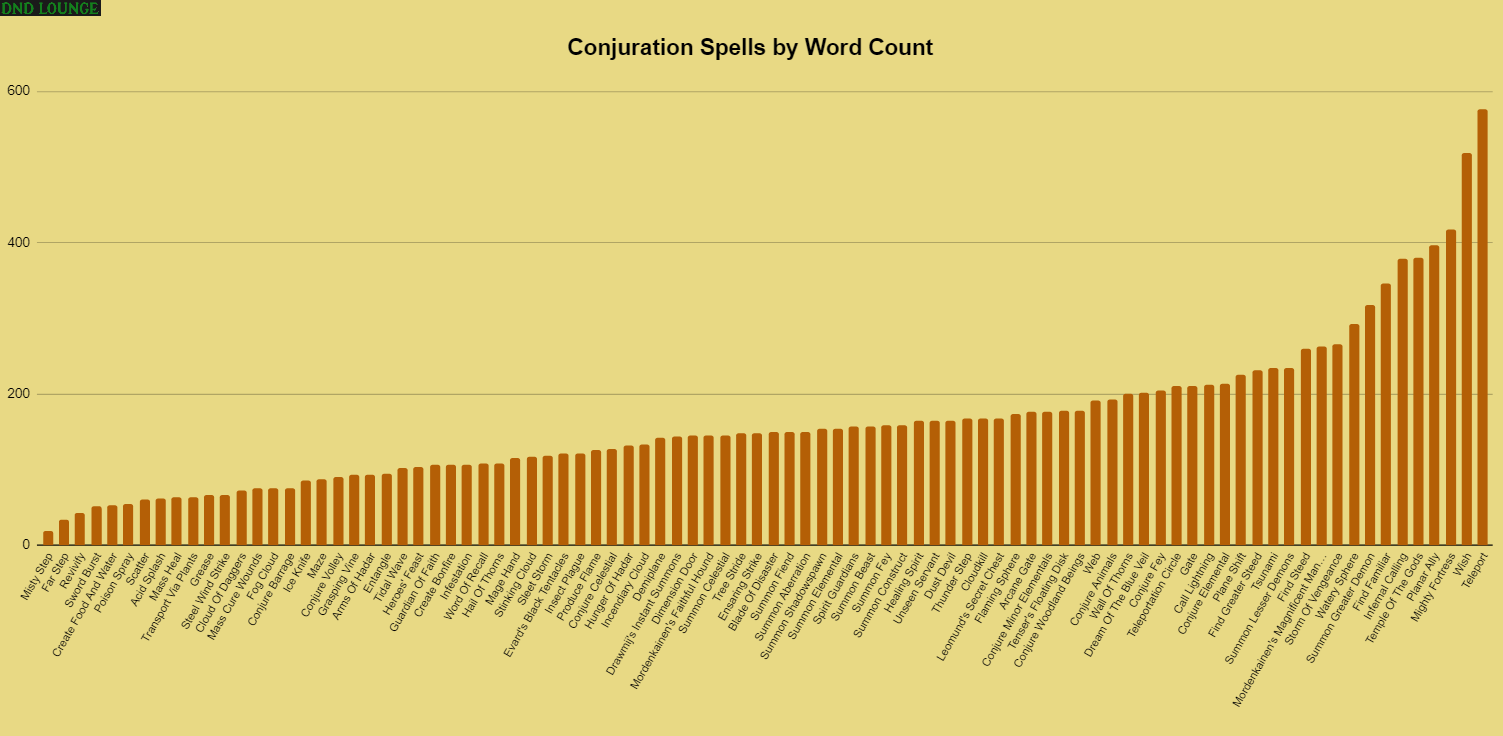
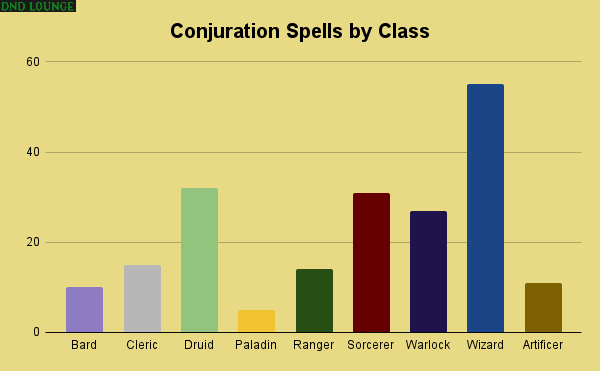
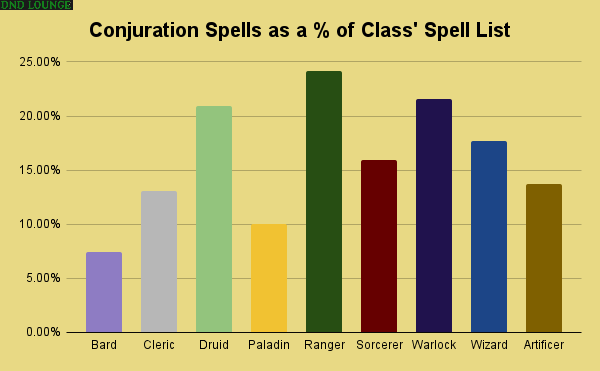
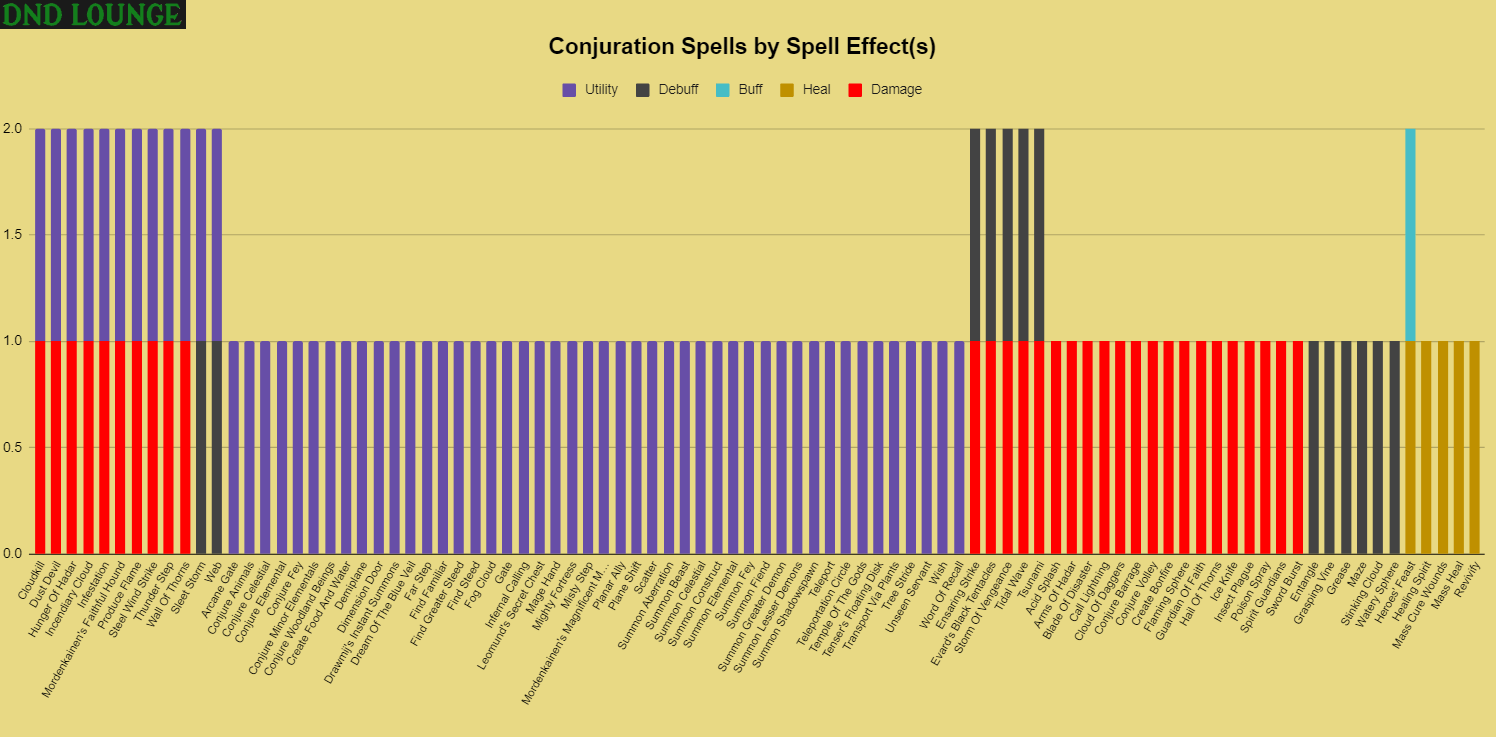
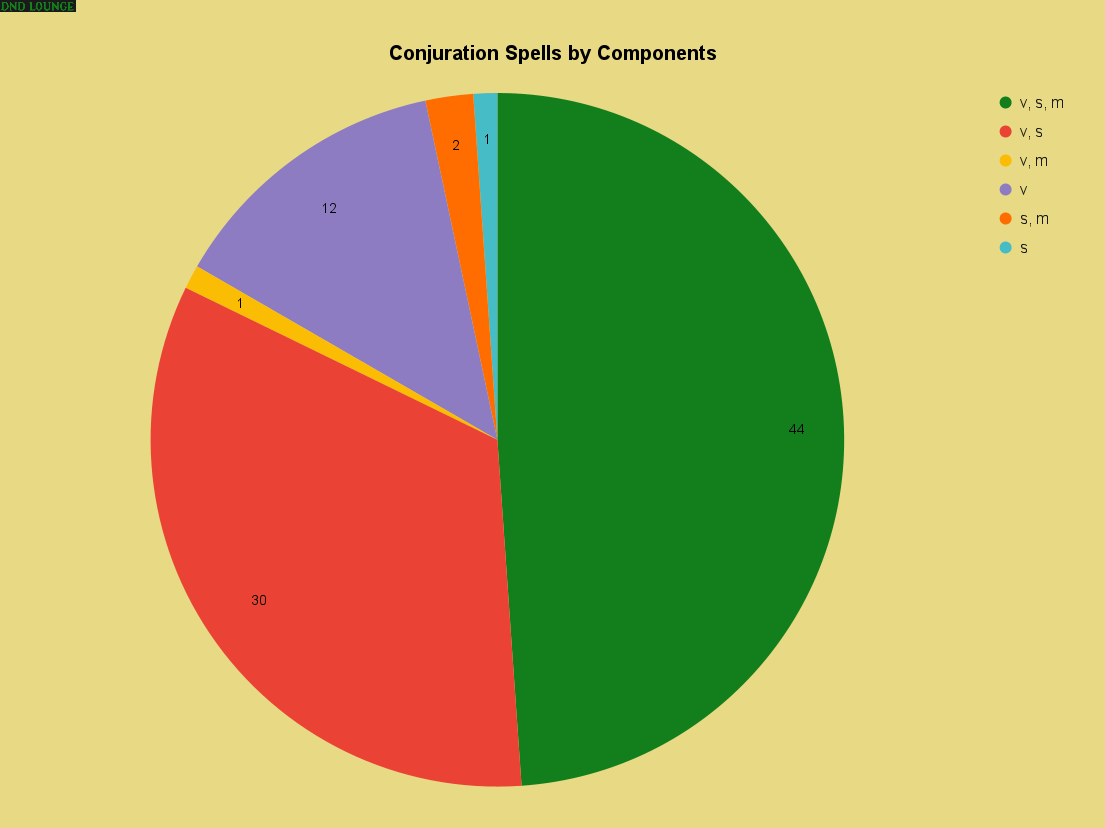
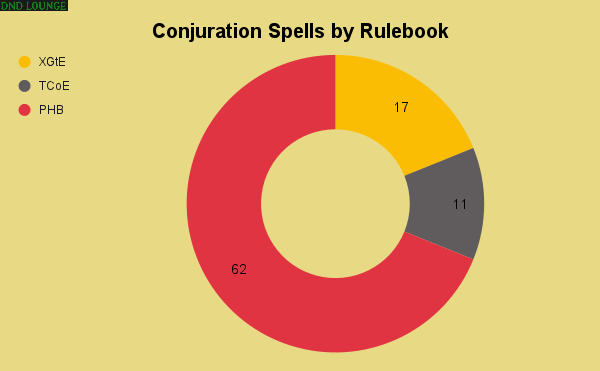

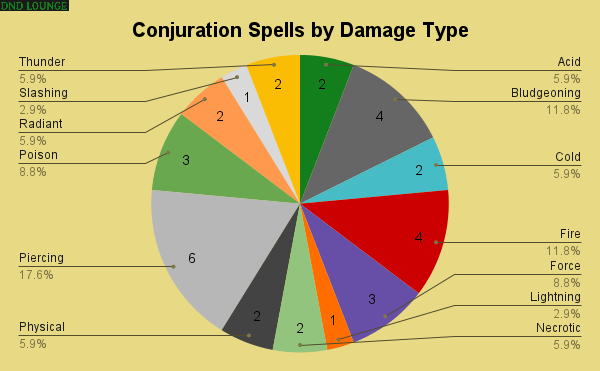
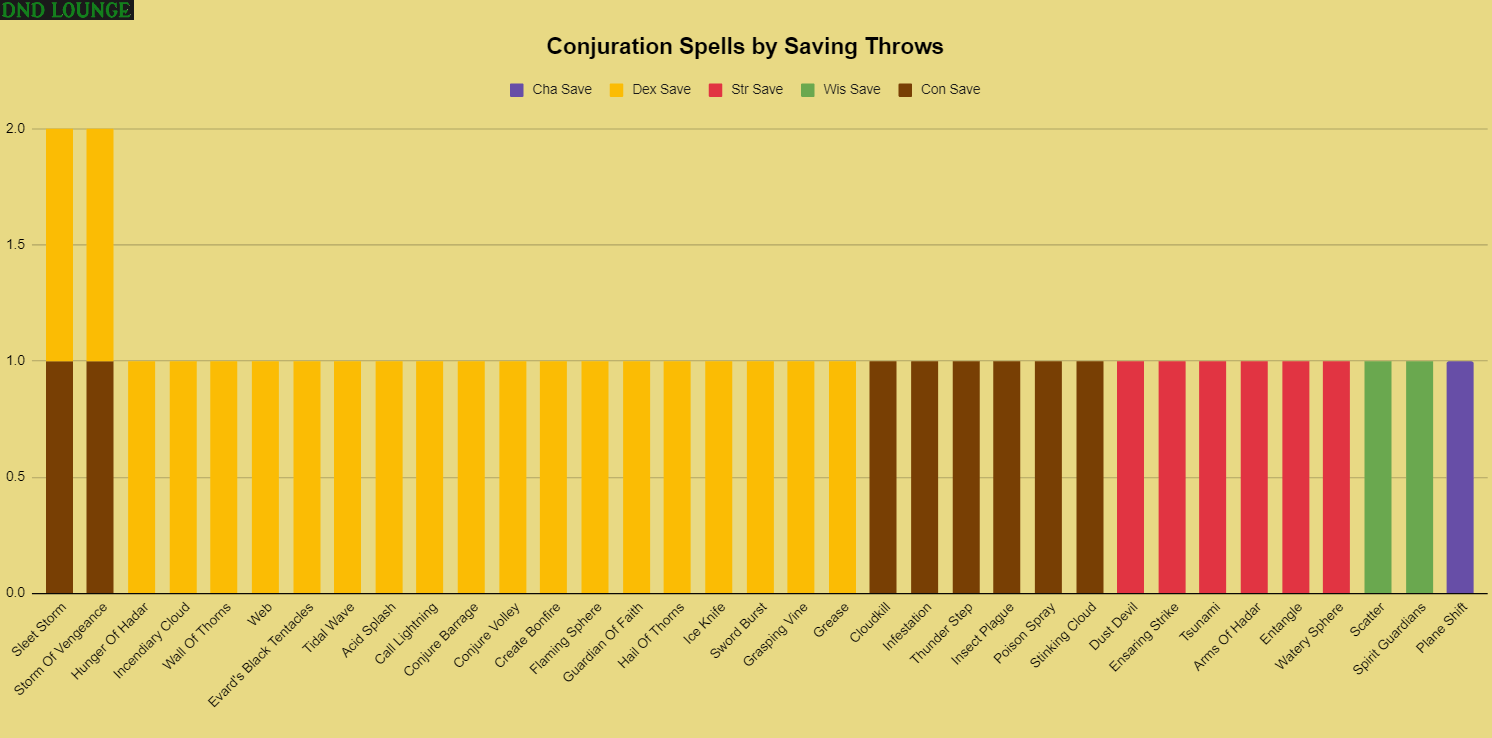
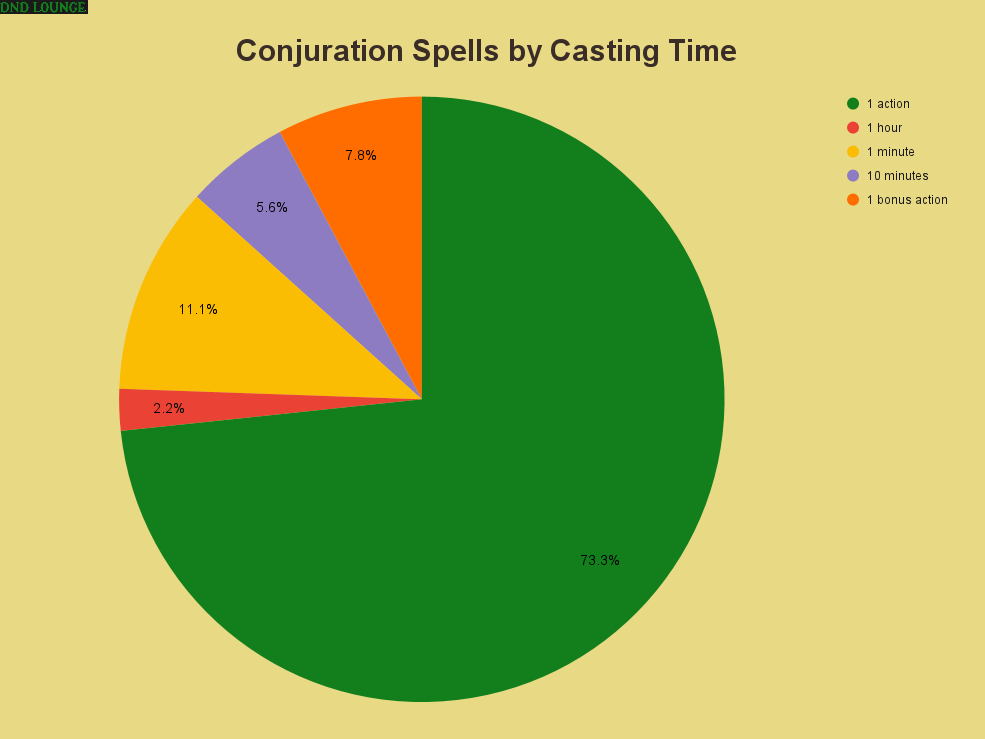
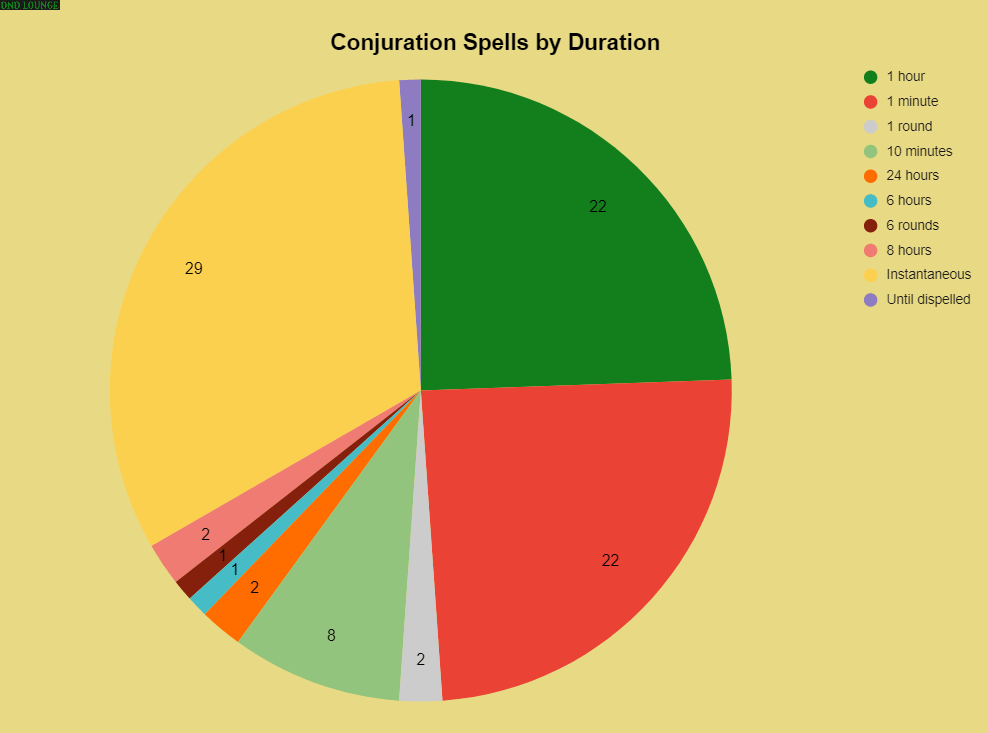
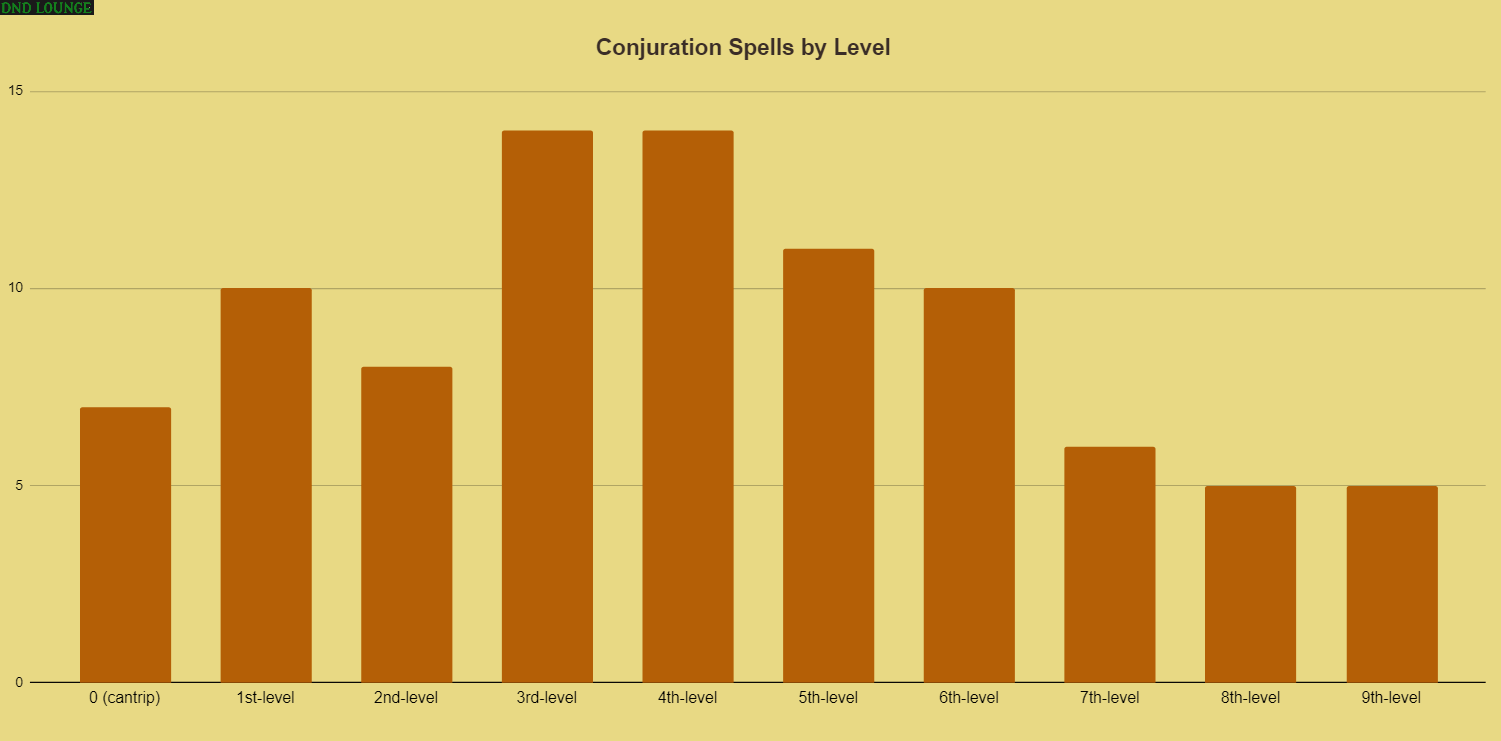
![Debuff Spells 5e [DnD Full List] dnd-ranger-casting-a-spell-on-spiders-5e](https://www.dndlounge.com/wp-content/uploads/2023/11/dnd-ranger-casting-a-spell-on-spiders-5e-300x169.webp)
![Healing Spells 5e [DnD Full List] dnd-elvish-druid-healing-human-fighter-5e](https://www.dndlounge.com/wp-content/uploads/2023/11/dnd-elvish-druid-healing-human-fighter-5e-300x169.webp)
![Buff Spells 5e [DnD Full List] dnd-tiefling-cleric-blesses-her-party-5e](https://www.dndlounge.com/wp-content/uploads/2023/11/dnd-tiefling-cleric-blesses-her-party-5e-300x169.webp)
![AoE Spells 5e [DnD Area of Effect + Multitarget Spells] dnd-dwarvish-wizard-casting-meteor-swarm-5e](https://www.dndlounge.com/wp-content/uploads/2023/11/dnd-dwarvish-wizard-casting-meteor-swarm-5e-300x169.webp)